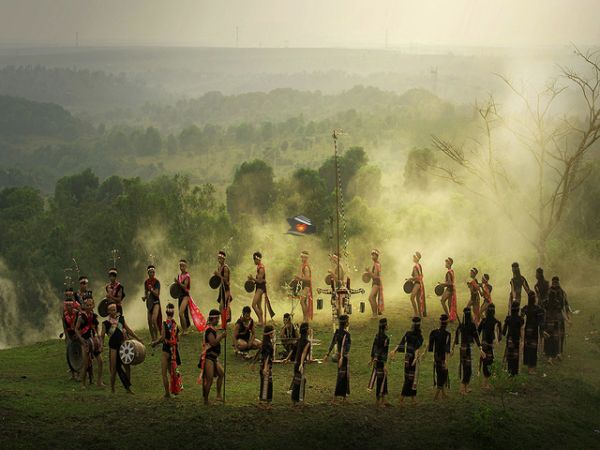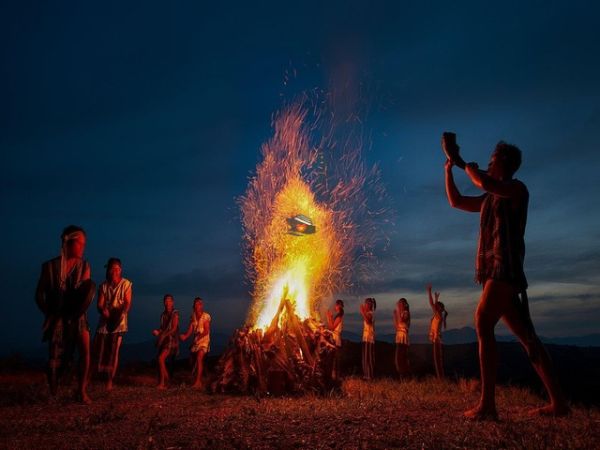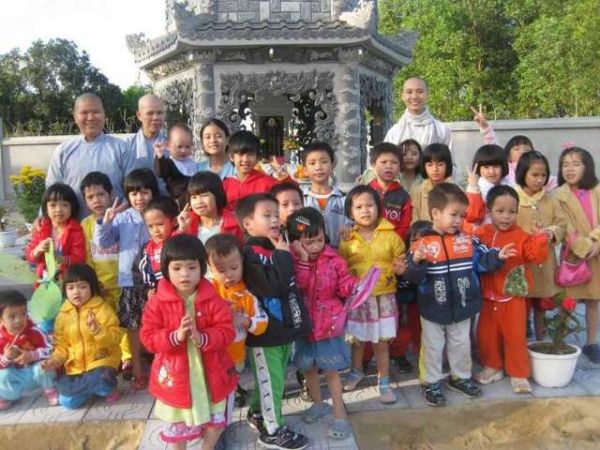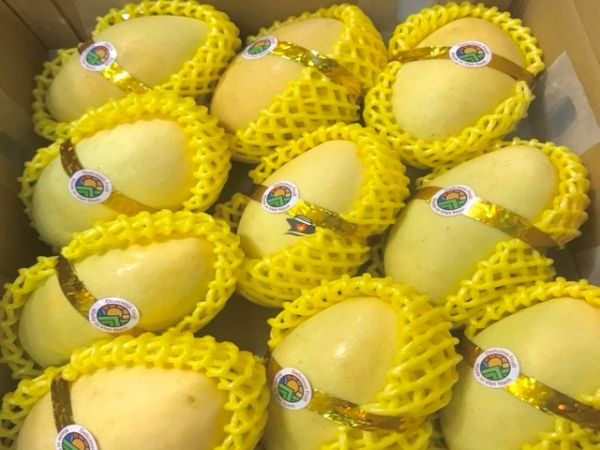VIETNAM CENTRAL HIGHLAND GONG CULTURE

Vietnam Central Highland Gong Culture. Gong performance is an art form that is deeply linked to the cultural heritage of ethnic groups living in the Central Highlands around the Truong Son mountain range, including Kon Tum, Gia Lai, Dak Lak, Dak Nong, and Lam Dong provinces. The Central Highlands' Gong Culture Space contains not only Gongs, Chimes, and Gong music melodies, but also artists, Gong and Chime festivals, and festival venues... The proprietors of this cultural place are from several ethnic groups, including Ede, Bana, Ma, Lac, Xe dang, and Jia Rai...
Vietnam Central Highland Gong Culture Information:
Gong ensembles are used in a variety of rituals across Vietnam's Central Highlands, and they are inextricably related to community life and the seasonal cycle. Both men and women play the instruments, which range in size from 25 to 80 cm.
The cultural space of central Vietnam's Gongs revolves around original musical forms performed against the backdrop of the region's linguistic and ethnic diversity. The compositions and practices of gong ensembles, as well as their performance skills, musical genres, and ritual functions, all exhibit diversity.
In the world of Vietnamese musical instruments, gongs are well-known for their exceptional worth and are considered as the preferred language that connects humans with the supernatural world. The gongs are composed of bronze and silver, with certain distinguishing characteristics. The inhabitants of Vietnam's Central Highlands have many sets of gongs that are used in various ways. A set of gongs typically comprises two to twenty pieces.
The most notable aspect of gong culture is that it displays marvels of human invention. Gong culture is mastered by the ethnic groups of the Central Highlands. Although they cannot cast gongs, their keen hearing and musical spirit add value to a product, transforming it into an exceptional musical instrument. In the hands of experienced folk artists, each gong serves as a musical note in an orchestra, allowing them to execute various pieces of gong music.
For ethnic minorities in the Central Highlands, gongs and gong culture provide an opportunity to affirm their communal and cultural identities. Gongs have evolved into an appealing icon of Central Highlands culture. It is a cultural and spiritual practice related to ethnic people's beliefs as they are born, grow up, and return to the soil.

Gong and chimes are ceremonial musical instruments. The Gong and Chime performances are inextricably linked to cultural rites and ceremonies; various Chime performances will be played at different ceremonies.
According to Vietnamese academics, gongs and chimes evolved from lithophones and are used as symbols of ethnic beliefs. They signify the ability to communicate with the invisible and with others in the community. Gongs and chimes are used in various ceremonies in the Central Highlands, including buffalo sacrifices, funerals, house inaugurations, seed blessings, harvest blessings, stock closings, and community rituals such as naming newborns, housewarmings, abandonment, and water trough ceremonies.
Gongs and chimes are formed of brass alloy, which is a combination of brass, gold, silver, and bronze. A Gong is a circular musical instrument that has a center elevated boss or nipple, whereas a Chime does not. Gongs vary in size, ranging from 20-60 cm to the largest, 90-120 cm. Gongs and chimes can be used independently or in combination. Ethnic groups in the Central Highlands employ several sets of Gongs and Chimes: a set of Chimes with two or three units, a set of Chimes with six units, and a set of Chimes with eleven or twelve units, containing three Gongs and eight or nine Chimes.

The area of Gongs and Chimes has played an important role in the lives of ethnic groups in the Central Highlands. They are holy musical instruments that symbolically depict people's pleasures and sorrows. Every Gong or Chime contains a God or Goodness, the strength of which is proportional to the age of the Gong or Chime. Gongs are precious items that symbolize power and prosperity. The more Gongs a family has, the more respect it will receive from other families in the community or outside. The village elder with the most Gongs has the potential to become the regional elder.
The Central Highlands' Gongs and Chimes are cultural heritages engraved in time and place, signifying the Central Highlands' musical growth from time immemorial to the present.
On November 25, 2005, UNESCO designated the Space of Gong Culture in the Central Highlands as a Masterpiece of the Oral and Intangible Cultural Heritage of Humanity. In November 2008, UNESCO placed the Space of Gong Culture in the Central Highlands on the list of the Intangible Cultural Heritage of Humanity.

Customs of the Central Highlands Gong Culture:
The Central Highlands gong is derived from long-standing historical and cultural traditions. Previously, the Central Highlands community was familiar with how to play the gong. Its voice is either deep or loud, moving and blending with the sounds of streams, wind, and people's hearts, allowing it to coexist with the heavens, earth, and people of the Central Highlands.
However, different ethnic minority groups organize distinct orchestras. People in the Central Highlands can tell which ethnic group is performing based on the sound of the gong.
The majority of Central Highlands ethnic groups have male gong players. Only a few ethnic groups in the region have female gong musicians.
KONTUM: Efforts to Preserve the Space of Gong Culture in the Central Highlands:
Kon Tum is a hilly province in the North Central Highlands with an ethnic minority population of 53%, which includes Bana, Xe dang, Jia rai, Jer trien, Brau, and Roman. The region's culture is rich and diverse. Gong and Chime performances are strongly linked to the social lives of ethnic groups in the Central Highlands.
Recognizing the importance of intangible cultural heritages in social life, Kon Tum province has recently prioritized the preservation and promotion of diverse ethnic groups' traditions, particularly the Space of Gong Culture in the Central Highlands.
In recent years, the Kon Tum Department of Culture, Sports, and Tourism has hosted the annual Festival of Ethnic Minorities in the Mang Den national ecotourism area, as well as reformed more than 20 traditional festivals of six ethnic minorities. "Gong Festival Night-Colors of Culture" and "Central Highlands Gong Festival" are yearly festivals held to promote Gong culture to both local and foreign tourists.
Over the years, efforts to preserve Gong music tunes and sets of Gongs have continued. According to data, locals in Kon Tum province have preserved almost 1,800 Gongs.
Many training courses on Gong playing have been organized to pass on the enthusiasm to future generations and promote the Gong culture. Gong training sessions in Kon Tum Kpong (Thang Loi district, Kon Tum City) have drawn a huge number of youthful participants. More than 30 "little" Gong performers can now perform at village celebrations. Training activities for "little" Gong performers have been held at Lung Leng hamlet, Sa Binh commune, Sa Thay district, approximately 20 kilometers west of Kon Tum City.
This teaching concept has been implemented in many other areas around the province, passing down the love of Gong culture to future generations in the Central Highlands. As a consequence, hundreds of Gong ensembles have emerged, allowing Gong music melodies to be heard across the Central Highlands' mountains and forests.

The meaningful of Vietnam Central Highland Gong Culture:
The Tay Nguyen people use gongs to dedicate their spirits and wishes to their gods and ancestors, ringing out their requests for plentiful crops, good health, and happiness.
The Tay Nguyen's (Central Highland) Gong Culture was established by Mon-Khmer-speaking people of the Austroasiatic language family, including the Bahnar, Gie Trieng, Xo Dang, Ro Mam, Mnong, Koho, Maa, and Brau ethnic groups, as well as Malayo-Polynesian speakers from the Austronesian language family, including the Rade, Jarai, and Churu. This culture is prevalent in the provinces of Gia Lai, Kon Tum, Dak Nong, Dak Lak, and Lam Dong.
Gongs are sacred to the Tay Nguyen people, who see them as divine homes. The gods might be feminine or male, and their appearances vary depending on the beliefs held. However, a gong is not born sacred since the Tay Nguyen people do not have the resources to produce their own. They must purchase them from Vietnamese forges in the lowlands. Those who live near the borders of Laos and Cambodia purchase gongs from these bordering nations. The purchased gongs must be altered to accommodate the sounds of each ethnic group. This is accomplished by each group's craftsmen who are experienced at mending gongs.
Once the gongs' sounds are considered appropriate, a sacrifice rite is performed to welcome the gong gods to take up residence. When this is completed, the gongs will ultimately include the material and spiritual qualities of the Tay Nguyen people. The older the gongs, the more powerful the gods that live within them.

The sound of the gongs is as sacred as the gongs themselves, and it is frequently used to connect with the ancestors and gods, making its whole purpose sacred and ceremonial. During such events, gongs transmit human wants and feelings through their melodies, which vary depending on the set of gongs, musical pieces, arrangements, and playing styles used by different ethnic groups. For example, the KPa tribe of Rade people frequently uses nine gongs and one drum in rituals to pray for healthy crops and health, but just two nipple gongs and one flat gong at funerals.
In contrast, the Mnong people utilize six copper gongs in their prayers to the gods and six bamboo gongs at their funerals. The Xo Dang worship with a completely distinct set of gongs. Their H'Lenh set of 11 gongs, which includes three nipple gongs and eight flat gongs, is utilized for many reasons. Meanwhile, the Maa worship the gods with six copper gongs and hold funerals with bamboo gongs.
Tay Nguyen gongs symbolize familial and communal activities for ethnic groups such as Bahnar, Jarai, Xo Dang, and Gie Trieng, among others. Gong music is usually accompanied by ceremonial dances, which are often performed by girls and women. However, among certain ethnic groups, males participate in some rites. When dancing, the lines between feminine and male roles might get blurred. Even the dances are exclusive to distinct towns and tribes, with unique routines for each, making it difficult for outsiders to participate.
Gong performers and dancers always wear their tribe's most stunning ceremonial robes, which are unique to that ethnic group and are rarely seen outside of these uncommon celebrations. They also wear copper, silver, and beaded jewelry on their belts, necks, and wrists, as well as little copper bells around their ankles that clang with each dancing step. The ceremonial garments offer these highlanders a special beauty that sets them apart from the numerous other tribes in the vicinity.
With all of its peculiarities, the Space of Gong Culture was designated as a Masterpiece of the Intangible Heritage of Humanity in 2005, before being added to the Representative List of the Intangible Cultural Heritages of Humanity in 2008. This acknowledgment has resulted in a change in Vietnam's intangible heritage. Tribal communities in the Tay Nguyen Highlands continue to conserve the Space of Gong Culture.

Hotline/ WhatsApp: +847-6666-0606
Email: info@friendlytravel.vn













